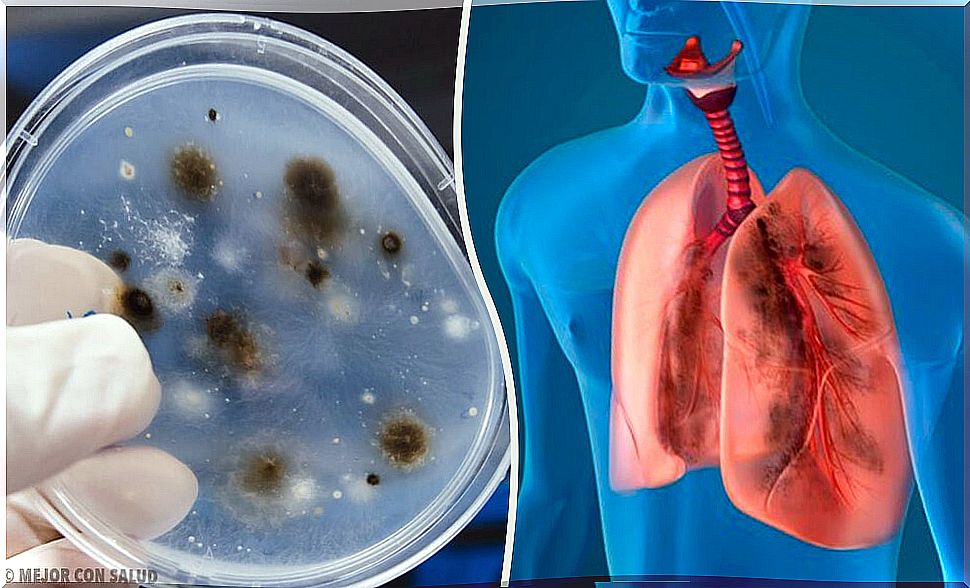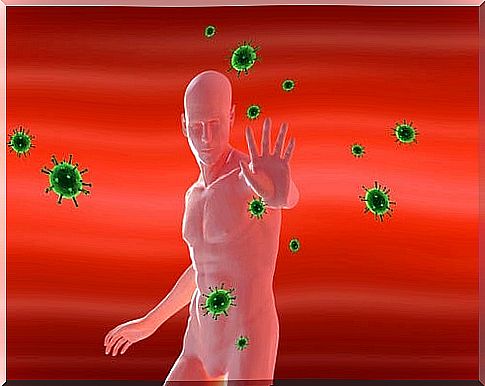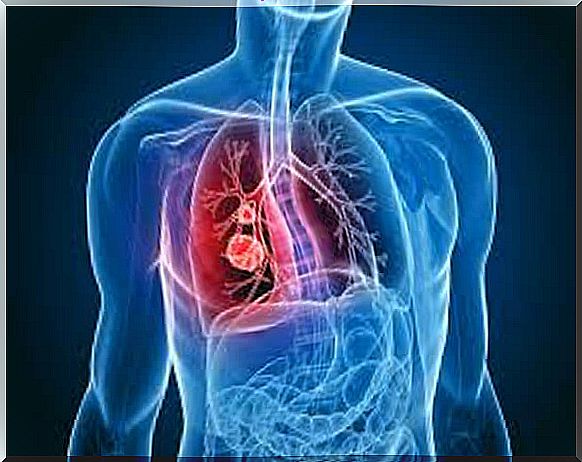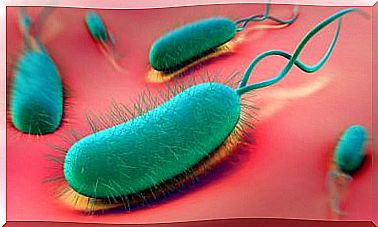Aspergillosis
Aspergillosis is an infection caused by a fungus that enters the body through inhalation, thus activating the immune system and causing characteristic infections, mainly pulmonary.

The Aspergillus fumigatus is the pathogen responsible for over 80% of aspergillosis. It is a filamentous fungus with a very wide distribution that is especially abundant in humid areas with organic remains, such as dead leaves or manure. It is also found in stored beans and marijuana leaves.
Therefore, aspergillosis are all those diseases caused by fungi of this genus. In general, it affects people with weakened immune systems, that is, people with low defenses.
It is transmitted through the inhalation of the spores of the fungus. From then on, the invasion is directed mainly towards the blood vessels.
Risk factor’s
- Neutropenia.
- Immunosuppressive drug treatments, for example corticosteroids.
- Hematological neoplasms : leukemias, lymphomas, unclassifiable myeloproliferative neoplasms, among others.
- Post-transplant immunosuppression. In patients who need an organ transplant, prior immunosuppression is necessary to reduce the chances of rejection.
- Immunological diseases that directly affect the defenses, such as AIDS. HIV patients often have aspergillosis.
In addition to risk factors related to the immune system and defenses, there are chronic lung diseases that predispose to this type of infection, such as cystic fibrosis or chronic obstructive pulmonary disease (COPD).
Main clinical forms of aspergillosis

There are various pictures in whose pathogenesis the Aspergillus fungus participates . The appearance of one or the other depends on the degree of immune involvement and the location of the fungus. Next, we will mention the most characteristic aspergillosis:
- Non-invasive:
- Aspergilloma.
- Allergic bronchopulmonary aspergillosis (ABPA).
- Invasive:
- Invasive pulmonary aspergillosis.
- Tracheobronchial aspergillosis.
- Other pictures of aspergillosis.
Aspergilloma

In this case, the fungus grows in existing lung cavities of different etiologies, along with cellular debris, mucus and fibrin. A delimited collection (with capsule) appears that presents without symptoms in 20% of patients. Eventually it can appear in the sinuses.
These cavities can come from old infections such as tuberculosis, cysts, emphysematous bullae (they are air chambers in the lung due to destruction or displacement of the distal bronchial structures, they appear in lung diseases such as COPD) or as a consequence of lung carcinoma .
The symptoms of these patients, if present, usually consist of a non-productive cough, without sputum or mucus emission, and sometimes bloody (hemoptysis).
The diagnosis is given by a chest x-ray in which the cavities will be detailed. Sometimes cultures for the fungus are negative, so it can be confirmed by the presence of specific immunoglobulins against the fungus.
Treatment is usually surgical in cases of repetitive hemoptitis. Antifungal drugs can be associated.
Allergic bronchopulmonary aspergillosis (ABPA)
It is an allergic reaction against Aspergillus species . It is a pathology that appears mainly in asthmatic patients and those with cystic fibrosis.
The substances released during the allergic reaction produce an obstruction of the airway, with a productive cough (expels mucus) associated or not with fever and anorexia, in addition to the asthmatic symptoms. If left untreated, it can progress to pulmonary fibrosis with bronchiectasis.
The diagnosis is suspected clinically in asthmatic patients, confirming it with allergic skin tests for Aspergillus, as well as the measurement of precipitins, eosinophilia and other parameters that support the allergy.
The goal in the treatment of allergic bronchopulmonary aspergillosis is to prevent the exacerbation of existing asthma or cystic fibrosis. Therefore, it is treated with oral corticosteroids.
Antifungal medications alone do not work to treat this condition, although they are often combined with corticosteroids to reduce the dose and improve lung function.
Invasive pulmonary aspergillosis

It is a serious and frequent condition, it appears mainly in patients with neutropenia and bone marrow transplant patients.
When the fungus reaches the lung alveolus, macrophages cannot stop the infection and it spreads. It produces necrosis of the lung tissue and can spread, through the pulmonary vessels, to the brain. In injured areas it can cause hemorrhagic infarcts.
These patients will present with fever, chest pain, non-productive cough, hemoptysis, and dyspnea (shortness of breath). In the lung radiograph, the halo sign is characteristic, a nodule surrounded by a radiolucent disc. It can be cavitated.
Regarding treatment, the use of antifungal drugs is key. And it should be noted that, without treatment, the prognosis is fatal. Therefore, mortality is close to 100%
Tracheobronchial aspergillosis
Although it is an invasive infection, it has a better prognosis than invasive pulmonary aspergillosis. 10% affect subjects without immunosuppression. In this case, the presence of Aspergillus causes ulcerative and pseudomembrane lesions in the mucosa of the respiratory tract.
Alveolar involvement is rare. In addition to the symptoms of cough, hemoptitis, and fever, there is a deep stridor due to the occupation of the airway. It is a serious condition that, if not treated, can lead to the death of the patient, due to the spread of the infection. Sometimes it can even rupture the airway.
Other pictures by Aspergillus
Although it is less frequent, aspergillosis can have other locations in addition to the pulmonary one. When the fungus is acquired through the bloodstream, it can affect any structure.
Acute or chronic involvement of the paranasal sinuses and aspergillosis of the central nervous system, which occur with brain abscesses, stand out.









